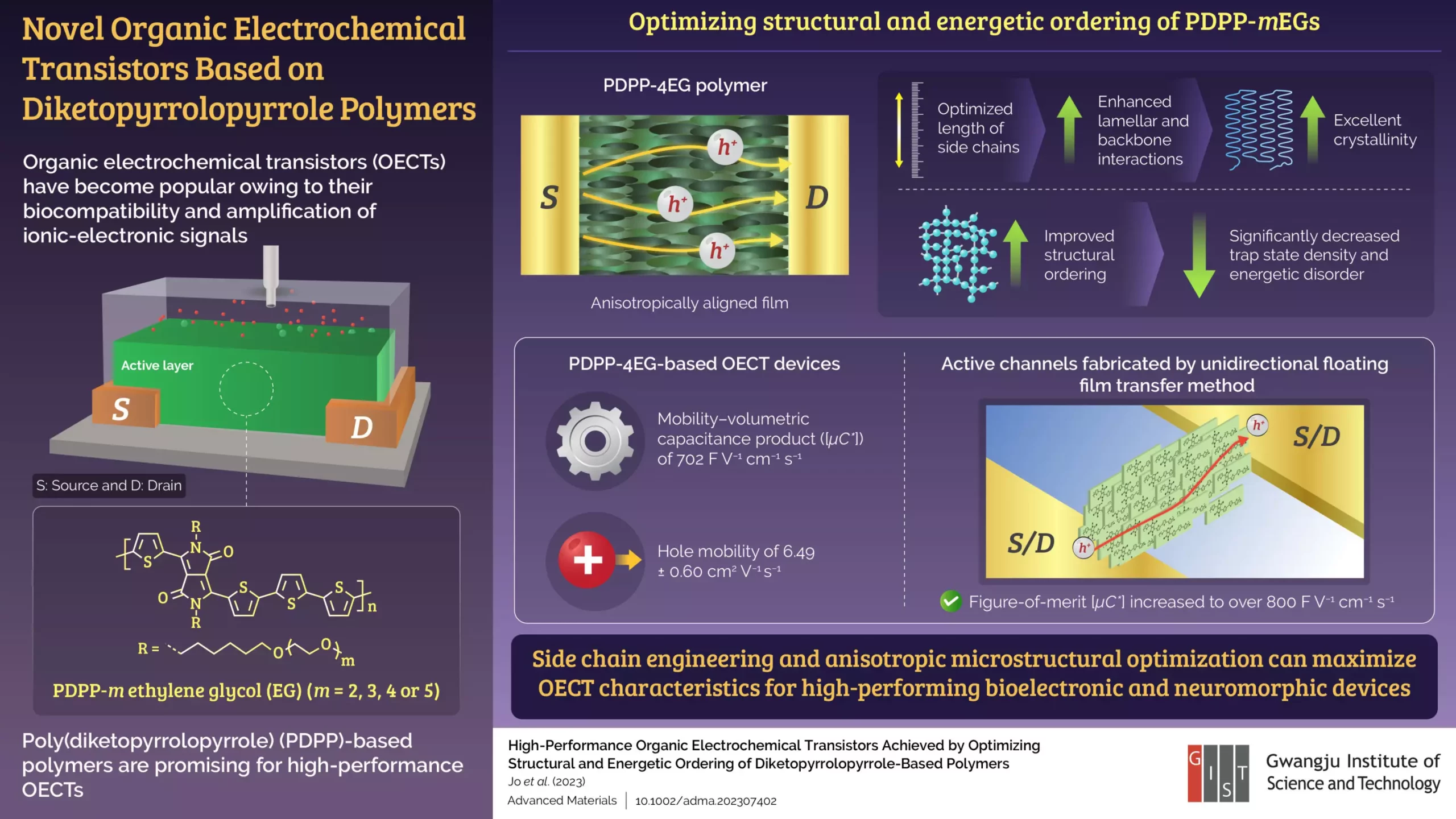Organic electrochemical transistors (OECTs) have captivated the attention of the scientific community due to their biocompatibility and unique characteristics. These transistors have the ability to amplify ionic-electronic signals and detect ions and molecules, making them versatile for various applications. Efficient transportation of ions and electrons is crucial for the optimal performance of OECTs. In recent research conducted by Professor Myung-Han Yoon and his team from Gwangju Institute of Science and Technology in Korea, they aimed to develop high-performance OECT devices using poly(diketopyrrolopyrrole) (PDPP)-type polymers as active layers. By modulating the repeating units of ethylene glycol (EG) side chains in PDPP, the researchers sought to enhance the charge carrier mobility and volumetric capacitance, ultimately improving the overall performance of OECTs.
The Challenge of Mixed Conductors
Traditionally, the use of mixed conductors in electrochemical transistors has limited significant performance improvements in conventional microstructure control processes. This is primarily due to the strong intermolecular cohesion caused by the flexibility and hydrophilicity of the molecular structure side chains. To address this challenge, the research team introduced an alkyl-EG hybrid side chain structure in their mixed conductor material. This incorporation provides the necessary hydrophobicity and structural stability to enhance performance.
Experimental Findings
The research team conducted various experiments to evaluate the performance of PDPP-type polymers with different numbers of EG polymers. Ultraviolet-visible absorption spectroscopy confirmed the formation of J-aggregates in the polymers with three, four, and five EG units. Additionally, cyclic voltammetry measurements revealed a gradual decrease in oxidation onset values as the number of EG polymers increased. Electrochemical impedance spectroscopy demonstrated similar volumetric capacitance values for all PDPP polymers, leading the researchers to focus on charge carrier mobility as the primary distinguishing factor.
Optimal Performance Achieved
Through careful fabrication and testing, the researchers discovered that the OECT device based on PDPP-4EG, fabricated via spin casting, exhibited optimal performance. This particular device showcased a figure-of-merit value of 702 F V-1 cm-1 s-1, a charge carrier mobility of 6.49 cm2 V-1 s-1, and a transconductance value of 137.1 S cm-1. Notably, the subthreshold swing values were as low as 7.1 V dec-1, and the number of interface trap states was remarkably low at 1.3 x 1013 eV-1 cm-2. PDPP-4EG also displayed the least energetic disorder and well-developed crystalline domains, minimizing microstructural disorder.
To further optimize structural alignment along the OECT channel, the research team employed the unidirectional floating film transfer method (UFTM). This method involved subjecting the polymer film with J-aggregates to unidirectional compression when introduced to a hydrophilic liquid. The UFTM PDPP-4EG film-based OECTs exhibited exceptional performance, surpassing a figure-of-merit value of 800 F V-1 cm-1 s-1.
Professor Myung-Han Yoon envisions the long-term implications of this research in the era of artificial intelligence and the development of neuromorphic devices. Organic mixed conductors, such as PDPP-4EG, hold immense potential for advancement in this field. The improved performance and reliability of organic materials can pave the way for applications in various fields, including wearable sensors, computers, and healthcare systems. Ultimately, this research contributes to the enhancement of human convenience and the expansion of possibilities in the realm of organic electronics.
The study conducted by Professor Myung-Han Yoon and his team demonstrates the potential of PDPP-type polymers with ethylene glycol (EG) side chains in enhancing the performance of organic electrochemical transistors (OECTs). By optimizing the number of EG units and employing the unidirectional floating film transfer method (UFTM), the researchers achieved remarkable figure-of-merit values and charge carrier mobility. The findings from this study have implications for the development of future organic electronics, particularly in the fields of artificial intelligence and neuromorphic devices. With ongoing research and advancements, organic mixed conductors like PDPP-4EG hold great promise in addressing the low performance of organic materials and contributing to human convenience in various applications.


Leave a Reply